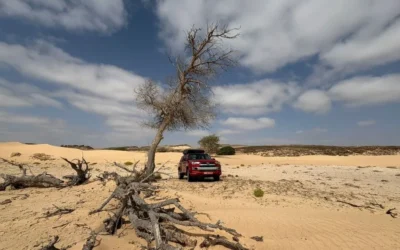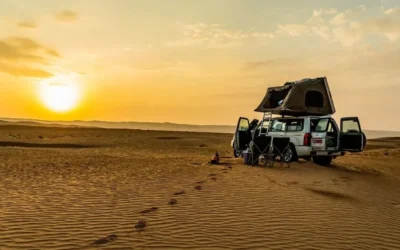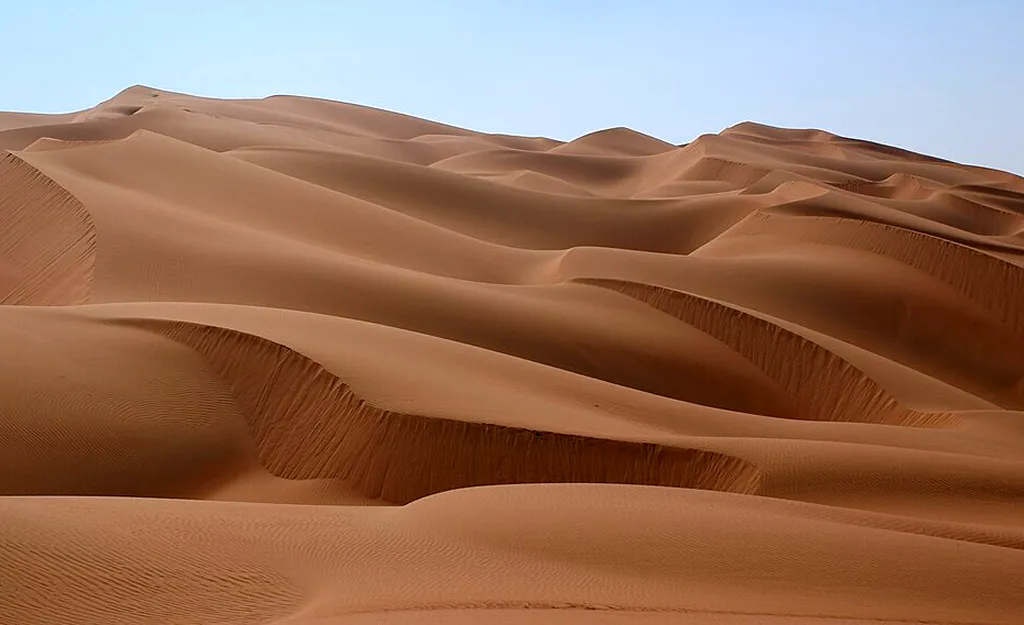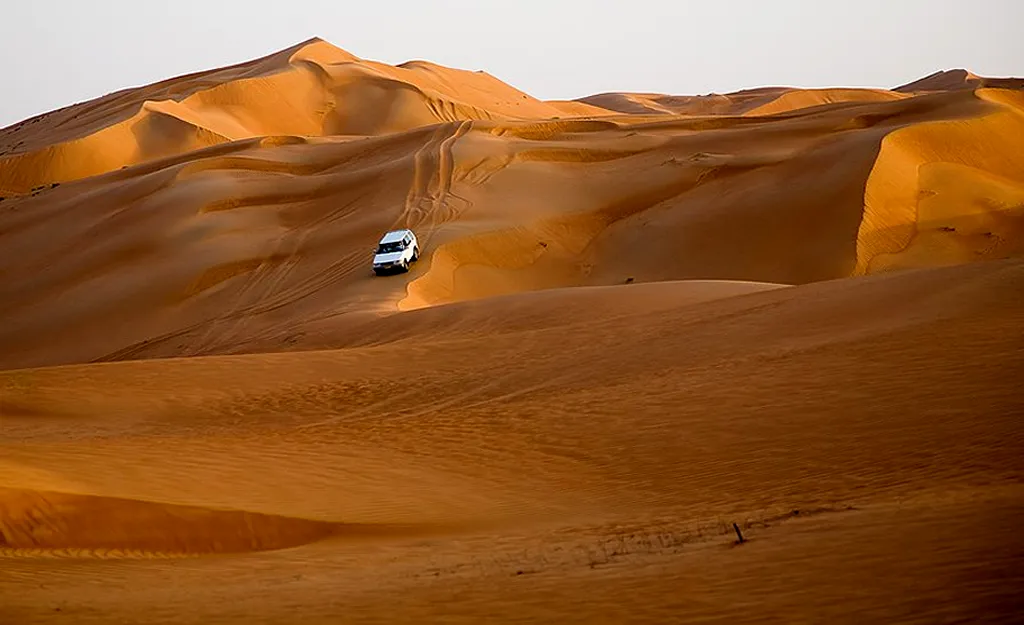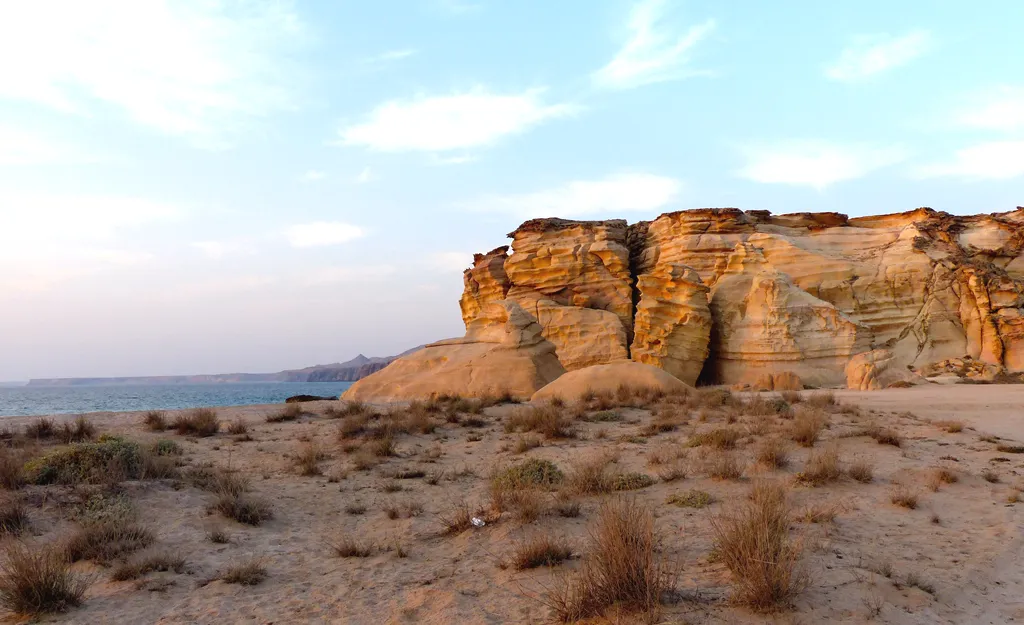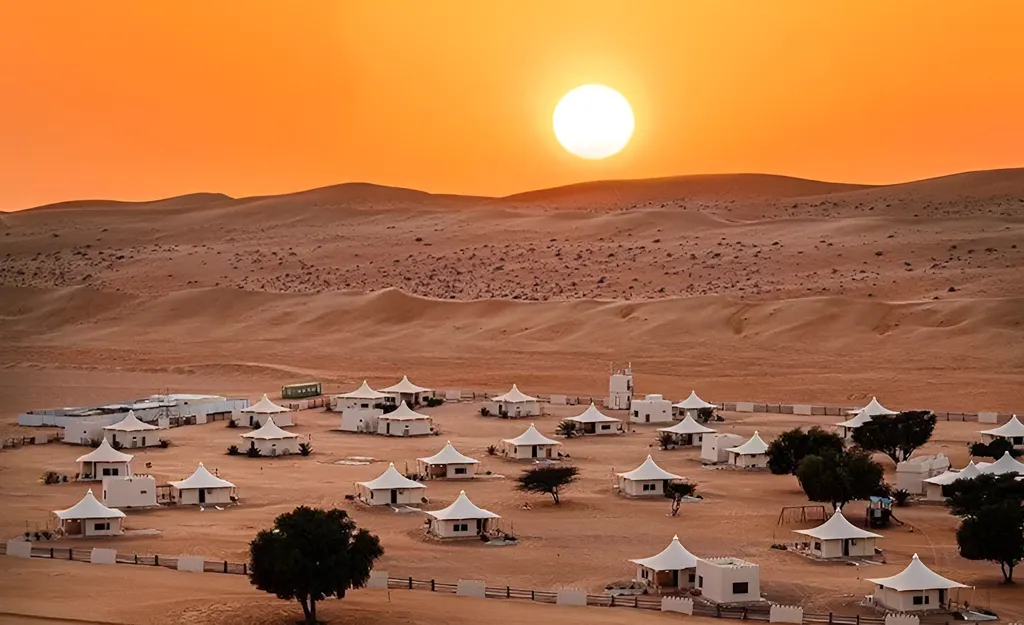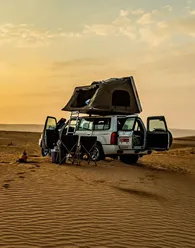Deserts in Oman
In this article, we will provide you with all you need to know about the Deserts in Oman. Deserts may not be something you’ve encountered on holidays before, especially if you haven’t holidayed in a Middle Eastern country, but rest assured, after reading this article you’ll have all the information to have a safe and enjoyable experience.
When visiting the deserts in Oman, you can choose to go it yourself, which would involve hiring an off-road 4x4 vehicle, or you could choose to be part of the guidance of local experts, who will get you to and from your destination safely.
If you choose to complete a trip by yourself, you'll need to be mindful of exploring the vast deserts safely, whilst remembering to sort out your itinerary. If you choose a local tour guide, they’ll sort the trip, including activities, which could be anything from a sand dune 4x4 driving experience to exploring an ancient village or taking a refreshing dip in a Wadi.
1. Empty Quarter (Rub’ Al Khali)
What’s unique about the Rub’ Al Khali is it covers four different countries; Saudi Arabia, Oman, United Arab Emirates and Yemen. It also encompasses most of the southern third of the Arabian Peninsula.
Here are some other key facts about Rub Al Khaili:
- It's 1000km (620 miles) long.
- It's 500km (310 miles) wide.
- Its elevation reaches as high as 800m in certain points and as low as sea level in others.
- The sand is a reddish/orange colour.
- There is a road between Oman and Saudi Arabia which goes through the Empty Quarter.
The best ways to experience this magnificent desert include:
- Qasr Al Sarab Desert Resort by Anantara: this exquisite hotel offers travellers the chance to experience the Empty Quarter by embarking on dawn walks, camel rides, and fat tyre biking.
- Tilal Liwa Hotel: This hotel is so stunning you might not want to leave, but if you can take yourself away for a moment, you can join in a range of activities offered by the Tilal Liwa Hotel to visit the Empty Quarter.
- Tel Moreeb: Want to visit the world's tallest sand dune? If you've travelled to Oman this should be near the top of anyone's bucket list. The Tel Moreeb stands at over 300m high, and 4x4 enthusiasts will enjoy trying to reach the top!
- Organised tours from Muscat and Salalah: Choosing one of these is probably the safest way to visit one of the largest deserts in the world. One of these will take you out for a few nights so you can get the full experience.
2. Wahiba Sands
Wahiba Sands is going to be everything you’re looking for in a desert; orange sand, dunes, and the amazing sand patterns you associate with deserts. It is located between the Hajjar Mountains and Arabian sea.
Here are some key facts about Wahiba Sands:
- This vast area covers 180km north to south and 80km east to west.
- Some of the dunes in Wahiba Sands can reach 100m high.
- There are no permanent settlements in Wahiba Sands. You'll find tourist camps and Bedouin temporary camps.
- Wahiba sands is also home to some Bedouin tribes of Oman.
- Wahiba Sands can be accessed from Muscat, Sur or Nizwa within around 2 hours of driving.
- You can join a day or overnight tour from Muscat.
- You can wild camp in Wahiba sands, just make sure you don’t pitch up too close to tourist camps.
If you’re confident enough you can enter Wahiba Sands and pretty much keep driving until you’ve hit your sweet spot. From here you can embark on some wild camping and once you’ve pitched up for the night, get ready to enjoy a night under the stars followed by an awesome sunrise.
Activities that you can enjoy in Wahiba Sands are:
- Dune bashing
- Camel ride
- Star gazing
Ramlat al Wahiba
This can get a bit confusing if you’re unfamiliar with the area, Ramlat al Wahiba is the historical name of the eastern part of Sharqiya Sands. The name was given to this region by European travellers.
In the present day, this desert is now referred to as Sharqiya Sands (which is known locally as Wahiba Sands). This beautiful area contains magnificent red and brown coloured sand dunes which draw in visitors from across the globe. There are also plenty of tourist services in the nearby vicinity which helps to draw in visitors and keep them in the area.
Sharqiya Sands
Known locally as Wahiba Sands (see above), Sharqiya Sands is a region of desert in Oman. By contrast to some of the other deserts located in this region, Sharqiya Sands is quite small, covering an area of 12,500 square miles. Sharqiya Sands has also been declared a site of scientific interest since 1986 and is home to 16,000 species of invertebrates and 200 species of other wildlife.
If you are a first-time explorer and wish to do a desert tour without the assistance of a local tour guide, looking at the Sharqiya Sands could be a good option. That’s because this desert is accessible and has access points from both Al Wasil and Bidiyah. There’s also a main route that runs from north to south that has plenty of lodges and camps where help can be accessed if needed.
3. Gulf of Oman Desert and Semi-Desert
The Gulf of Oman desert and semi-desert is on the Persian Gulf and the Gulf of Oman in Oman and the United Arab Emirates. It’s located in the northeastern tip of the Arab Peninsula.
Here are some other key facts about the Gulf of Oman desert and semi-desert:
- The temperature can reach up to 49 degrees Celsius in the summer months
- As this desert and semi-desert runs along a coastline, there are a mixture of habitats, including mangroves, swamps, lagoons, and mudflats, as well as the traditional desert conditions further inland.
- The Gulf of Oman desert and semi-desert are present in both Oman and the United Arab Emirates.
- An area of this region known as ‘Masirah Island' is home to the world's largest population of loggerhead sea turtles, and is an important breeding ground for them.
This desert and semi-desert covers an area of 24,1000 square miles.
Desert Camp in Oman
So, you want to go to a desert camp in Oman, but you don't know what to expect? Let's look at what you'll get if you decide to book into one of these whilst visiting the region.
In terms of how they look from the outside, they're a small cluster of buildings located in the desert and there are several detached buildings/tents within the camp that serve as rooms. There are also dining areas, and leisure areas and some even come with an outdoor cinema screen.
On the inside of the desert camps in Oman, you'll find all the facilities you'd expect to find in any other type of accommodation. You'll get some lovely traditional décor and a peaceful resting place where you should get one of the quietest night’s sleep ever!
The camps come equipped with loads of amenities such as parking, restaurants, air conditioning, coffee shops, swimming pools and gardens – they are a sight to be seen in the middle of the desert.
We have put together a brief list of some of the best choices of desert camps in Oman, so you don’t have to spend your time searching.
Most Famous Camps in Wahiba Sands
Sama Al Wasil Desert Camp
Location: 34 miles deep into Wahiba Sands
Facilities:
- Restaurant
- Coffee shop
- Barbecue grills
- Wildlife viewing area
- Nightly movie
Desert Nights Camp
Location: 38 miles deep into the Wahiba Sands
Facilities:
- Swimming pool
- Spa
- Restaurant
- Free WiFi
Luxury Desert Camp
Location: 45 miles deep into the Wahiba Sands
Facilities:
- 2 coffee shops
- Restaurant
- Archery
- Free bikes
- Nearby hiking and biking trails
Desert Nights Camp
Embarking on a desert nights camp in Oman is a top choice for many visitors of the region. As part of a desert camp in Oman, you can choose a specific location and spend an evening or two staying in the middle of the desert and enjoying amazing sunsets and sunrises.
Here’s what you can expect as part of staying at a desert nights camp in Oman:
- Private stay in a double / family room
- Meals included
- A chance to watch sunrises/sunsets
- See the galaxy like never before – you’ll see stars and planets!
- Be taken on the drive of your life to reach the camp location.
- Take part in desert activities such as hiking or camel riding.
- Raise your adrenaline with a desert driving experience.
The desert night camps in Oman really will take you away from the hustle and bustle of the cities and towns and allow you to relax in an environment like no other.
Once booked, you can make your way to a desert camp if you're confident enough to go solo, or if you prefer you can organise a pick-up from the camp itself.
As with all things, there are a few rules to follow which include, wearing comfortable clothing and footwear, taking any supplies you'll need, and finally being open to trying something a little different.
How Do You Camp in the Desert?
Camping in the desert will be a unique experience for most people and you should follow these top tips to help keep yourself safe.
- Ensure you’ve got plenty of supplies, including enough water.
- Think about how you’re going to cook your meals and make sure you have the correct equipment.
- Keep safe – you’ve got to think about insects, bugs, potentially dangerous wildlife as part of your camping experience and they best ways to avoid and dangerous scenarios.
- Make sure you have a quick route back to civilization in case of emergencies.
- Make sure your vehicle is in good working order before setting off – this is especially true if you’re hiring a vehicle.
- Ensure the weather will be on your side and it doesn’t get too hot.
- Make sure you’re skilled at putting up your tent. The last thing you need is to spend too long making shelter so practice before attempting the real thing so you’ve got it down to a fine art.
Whilst there are any number of rules that could be applied to a wild camping scenario, and whilst you're out in the wilderness anything can happen, by following these basic rules you will give yourself the best chance of a successful trip.
Related Questions
Find more information with these related questions:
How many deserts are there in Oman?
Oman is home to the following four deserts:
1. Wahiba Sands (Sharqiya Sands)
2. Bashwar Sands
3. The Empty Quarter (Rub’al Khali)
4. Ramlat Tawq
These deserts are a must-see for anyone visiting Oman and once you've seen them you can admire how awesome they really are!
What is the largest desert in Oman?
The Rub’ al Khali (also known as the Great Sandy Desert) is the largest desert in Oman, and in fact, it's the largest sand desert in the world.
This desert covers a whopping 250,000 square miles and encompasses most of the southern third of the Arabian Peninsula. This desert is so vast it’s present in Yemen, Oman, and the United Arab Emirates.
Is camping allowed in Oman?
The great news for those of you who like to embrace nature and spend a night under the stars is that camping is completely legal in Oman, and this includes wild camping.
The great news for campers visiting Oman is that it’s a pastime done by many Omani people so chances are that you’ll encounter locals during your adventures who may be able to share some top camping tips.
Is Wahiba sands worth visiting?
Wahiba Sands is most certainly worth visiting to see this simply stunning desert and marvel in the formation of the sand dunes.
Anyone visiting should avoid making the trip between June and September as temperatures become dangerously hot. Visiting in the cooler times of the year will be much more bearable and bring more enjoyment to the visit.
A great time to visit Wahabi Sands is at sunset when you can take some simply stunning photographs.

